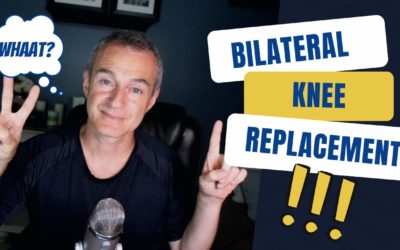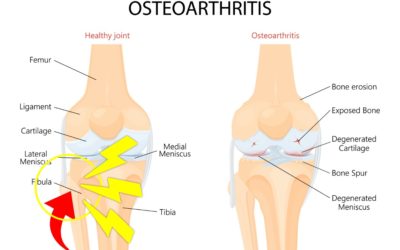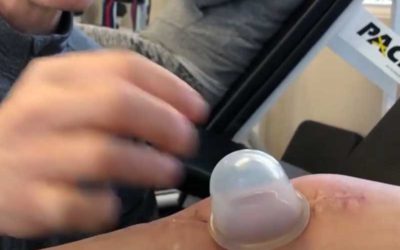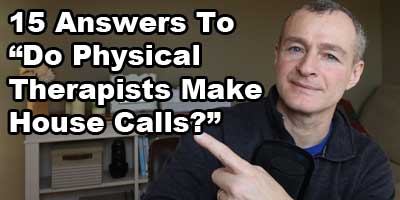Calf Pain After Knee Replacement
Calf and thigh pain is common after a total knee replacement. Calf pain may be caused by sore muscles due to increased swelling, altered walking mechanics, limited range of motion, and performing new exercises like ankle pumps and heel slides.
Tight Calf Muscles After a Knee Replacement May be Caused by New Alignment
After a total knee replacement, your new knee changes the alignment of the hip and ankle.
Many clients have some form of bowing in their leg before surgery.
Genu Varum also known as bow-legged is when the knee curves outward.
Genu Valgum also known as knock-kneed is when the knee curves inward.
Prior to surgery, your body has adapted to these mechanical changes over many years of your life. Now your new knee has changed decades of malalignment in 30-minutes. It is normal for your body to several weeks or months to adapt.
* Recommendation: Talk to your physical therapist to learn which exercises you can do to normalize your alignment and improve hip and ankle mobility in the process.
Calf and Ankle Pain After A Knee Replacement
Since a new knee changes the alignment of the whole leg it is common to experience ankle and calf pain during your recovery.
If the knee curved inward before surgery ‘Genu Valgum’ then the new, straight knee will increase medical ankle compression and may cause pain on the inside of the ankle.
* Recommendation: Your physical therapist may prescribe several exercises that increase ankle ‘eversion’ to improve the mobility of the inside ankle.
Conversely, if the knee curved out ‘Genu Varum’ before surgery then pain at the outside of the ankle may be more commonly experienced after surgery.
* Recommendation: Your physical therapist may prescribe several exercises that increase ankle ‘inversion’ to improve the mobility of the outside ankle.
These are normal symptoms and should improve in a few weeks of walking and joint specific exercises.
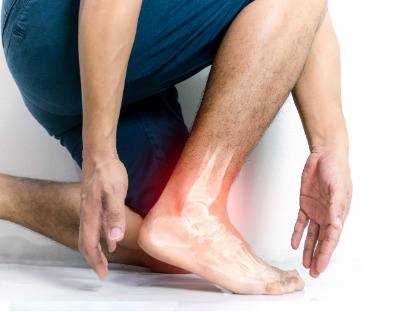
Why is my calf so tight after knee replacement surgery?
Swelling – as the edema or swelling starts to accumulate in the lower leg that fluid is pushing in as much as it pushes out.
Imagine someone squeezing your muscles 24-hours a day, 7-days a week. That would start to become painful.
Since you are not walking and moving as much as you normally would your swelling does not have the ability to move out of the lower leg and back into the system.
* Recommendations: Some therapists will perform compression wrapping to move the fluid out of the lower leg. You may have also been told to elevate your leg to reduce swelling. Finally, as you become more mobile and start walking more the act of walking will help squeeze some of the fluid out of your ankle and calf.
Below is Amazon’s “Best Overall Massage Gun” Pick for 2021
What can I do to reduce the calf pain?
To reduce calf pain and lower leg swelling you should schedule a time to stand and walk every one to two hours during your first two weeks after surgery.
You may also have been prescribed compression stockings by your surgeon or physical therapist. You should use these as prescribed.
You may try some form of self-massage. Here is a video of a rolling pin massage that is commonly recommended after knee replacement.
Tight Calf Muscles After Surgery
Stretching can be an effective strategy to reduce calf muscle tightness. These wedges are sold on Amazon as tire chocks and are incredibly effective for stretching a calf muscle.
Stretching may be performed after a rolling pin massage for better results. The massage will help warm up the muscle and promote fluid exchange. Then the stretch will help lengthen the muscle.
Shin and Ankle Pain
Sometimes clients will experience shin and ankle pain after knee replacement surgery. This too is usually caused by the new alignment of the knee as well as increased activity levels.
Before surgery, many clients were unable to walk and exercise due to pain. After surgery and during physical therapy many clients are doing far more than they are accustomed to doing. This increase in activity may account for shin pain in the bone or muscles alongside the bone.
Another common report is pain and the front of the ankle. This may be due to tightness between the tibia and fibula (which are the bones of the lower leg.)
Massages and stretching of these areas can be a great way to alleviate this pain.
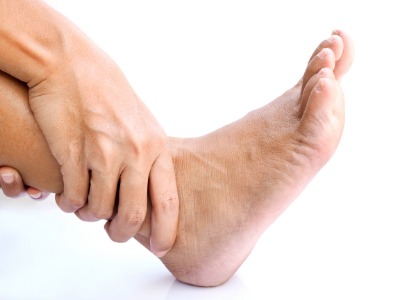
Calf Pain May Persist for Several Weeks or Months After A Knee Replacement
Since there are so many possible causes of pain in the calf and ankle, it is impossible to determine how long the associated pain will last.
For most clients, their symptoms will resolve in the first 6 to 12 weeks. If pain persists beyond that timeframe without a known cause it is recommended that you consult with your surgical team and physical therapist for further medical assessment.
To See Video 1 Look Below:
3 Pros & Cons of Bilateral Knee Replacement
Having a bilateral knee replacement on the same day vs different days depends largely on your surgeon's assessment of your condition and current clinical research. A 2020 study suggested that patients receiving a same day bilateral knee replacement were not more...
Best shoes to wear after knee replacement
Best shoes to wear after knee replacement surgery:This article is specifically written to help you choose the best shoes to wear after knee replacement surgery when you return home. This information is focused on house-shoes and day 1 to week 6 post op.Click here to...
NEW Orthotics After Knee Replacement
Do You Need New Orthotics After Knee Replacement Surgery? Often, patients who receive a total knee replacement will have previously been prescribed custom orthotics. Custom orthotics may help reduce stress at the knee joint in the months or years before knee surgery...
Pain on the Outside of Knee After Total Knee Replacement
Experiencing pain on the outside of knee is common among individuals who have had a total knee replacement. 1. Fibular Head (Outside of Knee) The long skinny bone that runs along the outside of your lower leg is called the Fibula. This bone is not directly involved...
Cupping Therapy After Total Knee Replacement
Although the risk of major medical complications attributed to cupping therapy is low, the efficacy of cupping therapy is poorly associated with post surgical care and total knee replacement scar tissue mobilization.Cupping Therapy Research As of March 21, 2022 a...
Do physical therapists make house calls?
Do physical therapists make house calls? Find the answer to this and questions like: How much does physical therapy cost? Will a physical therapist come to my office? What is MobilePT?
